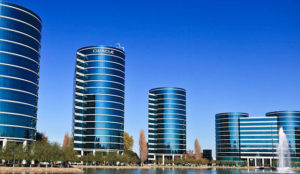The close of the second quarter ends the first wave of vendor customer events. Still to come this fall are Salesforce Dreamforce and Oracle OpenWorld — and others — but mercifully, we have the summer to digest all the information absorbed this spring and re-sync with our native time zones.
Following are some things I learned during show season, but as you read this know that no person goes to all the events, and other people — like Paul Greenberg, Esteban Kolsky and Brent Leary — are well worth reading on the subject. So are Jon Reed and Phil Wainwright.
CRM Is Still Big, Big, Big
CRM doesn’t appear to be slowing down. As an industry, it’s rated at about US$35 billion in revenues — up threefold over where it was at the beginning of the century when I was a tenderfoot.
One reason for the growth is the constant diversification, led in no small part by Salesforce’s innovative culture. Big vendors like SAP have rededicated to CRM, and I wish them well, though I have a nagging feeling that’s an uphill path.
Still, many enterprise vendors seem to have entered CRM as a defensive move to secure their legacy customers. That’s not a recipe for sustained excellence, but what do I know? I’m just an analyst.
Salesforce Won’t Bail Out Your Business Plan
Some vendors got into the market on Salesforce’s coattails without realizing they still would have to perform. You can be in the AppExchange and flounder if you’re waiting for a Salesforce sales rep to call you up with a deal.
Also, Salesforce isn’t likely to buy your business. It might buy a lot of companies, but there are even more to choose from.
The Next Wave: An Information Utility?
I’d say we’re in the latter half of the current wave — a time of automation, consolidation, efficiency, and effectiveness. In other words, commoditization is happening. That’s what the digital disruption is about, in my humble opinion.
Right around the corner is the formation of an information utility, which is already ongoing and gaining altitude. No one calls it that, but major vendors have been building cloud data centers galore — Microsoft even sank one off the coast of Denmark as an experiment in cooling to save money.
At any rate, the big players need to get together to set utility standards for APIs, metadata, and interoperability in much the same fashion others did about 50 years ago to breathe life into the relational database and SQL. This will necessarily add to commoditization, but it will also open new areas for competition.
Business Models Proliferate – SaaS Is Now Table Stakes
We’ve begun winding down the on-premises business model, though it likely will be with us on the edges for most of the century. However, for practical enterprise computing, the cloud and subscriptions have come into their own.
The folks at Zuora have been evaluating the subscription side of the model and its offshoots and will likely have interesting things to tell us down the road. Clearly, subscriptions haven’t taken over the world yet, but we’re all trained subscribers at this point, and that fact drives CRM.
I expect more ideas to surface articulating a new model of Labor as a Service — or whatever we call it. The more we engage in the gig economy, the more we’ll find we need an organizing principle, and I think it will borrow heavily from XaaS.
Social Media Has Jumped the Shark
The Facebook revelations of the last quarter — from Cambridge Analytica to feeding data to hardware makers — have put Facebook under a cloud and caused some people to re-evaluate their allegiances.
Can social survive? Or has it been exposed as a show — like Seinfeld — about nothing?
My instinct is that social media has to morph into a data utility sitting on top of the information utility. It also has to become regulated to prevent the worst abuses; otherwise, it will become irrelevant. Translation: Billions of users are not enough; they have to be the right users.
CRM Is Maturing
This means there are few if any, niches left for upstarts with a better mousetrap in any of the traditional stovepipes. Those bases are covered. Nevertheless, new opportunities open all the time.
Some are crazy and scary amalgams of artificial intelligence, machine learning, selling, and marketing — with a little Tai Chi added for good measure. They won’t all survive, but that’s not news. The big players are only getting bigger.
Salesforce is well beyond the $10 billion mark, and Oracle has been growing its cloud presence every quarter. The majors have so much money to direct at R&D and marketing that a new company can’t expect to go head to head.
The Middle Office Might Be a Thing
I learned this at Apttus’ event. Though the name needs work, the idea is sound. It aligns with the coming information utility.
More importantly, it acknowledges the reality that back-office data drives some front-office processes and vice versa. The middle office is coming on strong in the Internet of Things and the semi-automated world of e-commerce, which is only growing.
Chicago Is a Thing
Chicago used to be the city tech users flocked to for conferences, but then San Francisco cornered the market. The tide is turning, though. Chicago only has spectacular weather in a few months, but year-round, it has great food, friendly people, a can-do spirit, and art and architectural gems.
I went to two conferences at the McCormick Center this quarter. They were well attended, and the venue was plush and spacious. Give it to Chicago — it knows how to do architecture. So I look for more conferences to migrate to the middle of the country — to places like Chicago, Dallas and New Orleans.
It means shorter flights for many, and these cities have more real-life amenities than, say, Las Vegas. Don’t look for Dreamforce or OpenWorld to move, but each company has started using Chicago for smaller events.
Last Word
Despite the money spent on shows, some CRM vendors seem to be reducing their marketing budgets, which is a mistake.
The vendors I see that have been doing well have a balance of shows, automated outreach, and in-your-face marketing for good reason. Others rely too much on top-of-funnel marketing and don’t get the conversions they want.
People buy from people, and there are too many warm leads for salespeople to chase right now. They can’t spend their time upgrading the leads because their primary job is closing deals. So, more live marketing might be in order. Chatbots are fine, but talking to real marketing people, doing webinars, etc., haven’t gone out of fashion.


























































